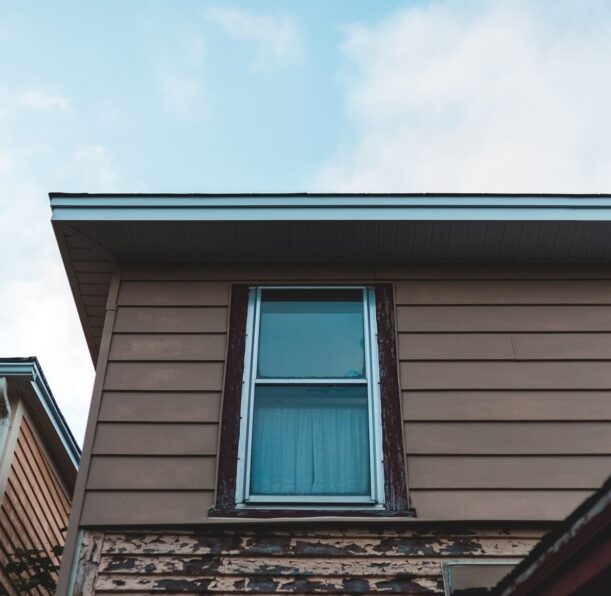
Repairing siding damage after a storm is essential to maintaining your home’s durability and curb appeal. High winds, hail, and flying debris can cause significant issues, making a thorough inspection crucial. Identifying and repairing siding damage as soon as possible prevents further deterioration and costly repairs. Since this process can be tedious and challenging for homeowners, hiring a qualified siding contractor ensures expert repairs and long-lasting results. Don’t wait—protect your home by addressing any siding issues promptly!
Not all siding is as easy to repair as others. Fiber cement, for example, entails quite a bit more labor than wood. Small holes can be filled with putty, but that is a makeshift repair at best. Instead, consider installing low-maintenance siding such as vinyl. Vinyl is one of the easiest types of siding to repair because interlocking panels can often be replaced quickly without having to match pastes and putties to your siding color. Vinyl siding replacement is also an economical solution if you decide that replacement is the way to go.
1. Conduct a Thorough Inspection
Start by walking around the perimeter of your home and looking for any signs of damage. There are a lot of telltale signs you should be on the lookout for, including these common indicators:
- Cracks – Check for cracks in the siding, particularly along the seams. These can allow water to penetrate into your home, leading to water damage and mold growth.
- Holes – Holes in your siding can be caused by flying debris, hail, woodpeckers, or other animals. They can also allow water and pests to enter your home.
- Fading – Fading or discoloration can be a sign of sun damage, which can weaken the siding and make it more susceptible to damage.
- Warping – Siding that is warped or buckled may be a sign of water damage or structural issues. It can also be a sign that the siding was improperly installed.
- Interior Indicators – If you notice peeling paint or wallpaper inside your home, it could be a sign that water is getting into your home through damaged siding.
- Increased Energy Usage – If your energy bills have been increasing, damaged siding may be to blame. Damaged siding can reduce your home’s insulation and make it more difficult to maintain a comfortable temperature.
2. Check for Water Damage – Repairing Siding Damage
If there is any water damage, you may notice peeling paint, rotting wood, or mold growth. Be sure to check your ceilings as well. Siding damage isn’t generally connected to ceiling stains, but damages on an upper floor may allow water to penetrate the home, and that could damage ceilings, drywall, and more. If left untreated, water damage can lead to further problems, so it’s important to address it quickly.
3. Evaluate the Severity of the Damage
Not all damage is equal. Some dents or cracks may be minor and only require a simple repair. However, larger holes or more extensive damage may require a full replacement. This is when you will need to decide whether to hire a siding specialist. For extensive repairs or a full replacement, a licensed and insured contractor is always a better choice.
4. Repair Minor Damage
If the damage is minor, you can often repair it yourself. Use a caulking gun to fill in any cracks and use a putty knife to smooth it out. For dents, gently push the siding back into place. The general repair process goes as follows:
- Clean the Damaged Area – Use a mild soap and water solution to clean the area around the damaged siding. This will remove any dirt, grime, or debris that could interfere with the repair process. Cleaning the area will also make it easier to spot any additional damages.
- Assess the Damage – Determine the extent of the damage to the siding. If it is just a small hole or crack, you may be able to repair it easily. However, if the damage is more significant, you may need to replace the entire section of the siding, and it’s better to hire a siding contractor to take care of it.
- Repair the Damaged Area – For small holes or cracks, use a caulk gun to apply exterior-grade caulk to the damaged area. Smooth the caulk out with a putty knife, and let it dry completely. For larger holes, you can use a patch made of the same material as your siding. Cut the patch to size and secure it to the damaged area with screws.
- Paint or Seal the Repair – Once the repair has dried completely, you can paint or seal the repaired area to match the rest of your siding. Not all types of siding need to be painted or sealed. Vinyl siding, for example, can be matched to your existing siding unless the original siding is too badly faded– in which case a full replacement is in order.
5. Replace Damaged Pieces
If the damage is more extensive, you may need to replace the damaged pieces of your siding. You can purchase replacement pieces from your local home improvement store. Make sure to match the color and style of the existing siding. In general, siding that is easy to repair or replace will have individual pieces that can be easily removed and replaced without disturbing the surrounding pieces. If you are unsure about how to repair or replace your siding, it’s best to consult a professional at Peak Roofing & Exteriors to ensure that the job is done correctly and safely.
Get Professional Help at Peak Roofing & Exteriors
It’s crucial to inspect your siding for damage after a storm and address any issues promptly to prevent further damage. Whether the damage is severe or not, consider hiring a professional contractor at Peak Roofing & Exteriors to ensure that your siding is in good condition to protect your home from the elements. We have the necessary expertise and tools to handle the job safely and efficiently, and our testimonials speak for themselves. Our contractors have over 18 years of experience and are committed to delivering exceptional customer experience.
Peak Roofing & Exteriors
If you’re looking for an honest and experienced team that can handle your siding project in West Texas, look no further. Peak Roofing & Exteriors can take care of your home or business with quality and integrity. Contact us today and book a FREE inspection!
